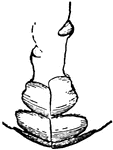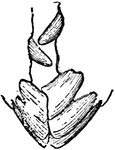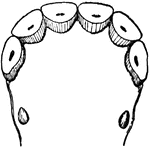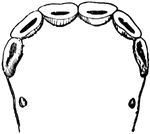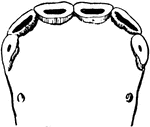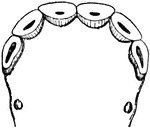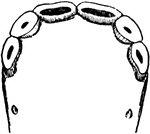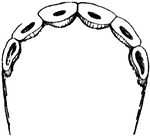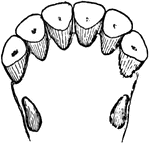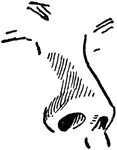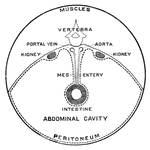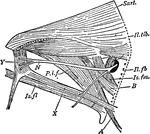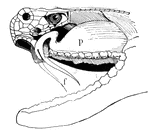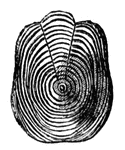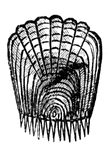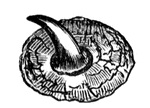Nerve Cells
"Nerve tissue is really made up of a great number of distinctive units called nerve cells.…
Portion of a medullated nerve fiber
"The axis cylinder is in the center. On either side is seen the medullary sheath, represented by dark…
Nerve trunks
"The Main Nerve Trunks of the Right Forearm, showing the Accompanying Radial and Ulnar Arteries. (Anterior…
Great Nerve
"A Great Nerve (Posterior Tibial) on the Back of the Leg, with its Accompanying Artery of the Same Name."…

Great Nerve
"A Great Nerve (Crural) and its branches on the Front of the Thigh. The femoral artery with its cut…

Great Nerve
"A Great Nerve (Plantar) and its Branches which supply the Bottom of the Feet. Note the cut tendons…

Sympathetic nerve
"The Cervical and Thoracic Portions of the Sympathetic Nerve and their Main Branches. In the center…

Superficial Nerves of the Forearm and Hand
"Superficial, or Cutaneous, Nerves on the Back of the Left Forearm and Hand." — Blaisedell, 1904
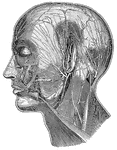
Superficial Nerves of the Head
"Showing some of the superficial nerves on the left side of the neck and the head. A few superficial…
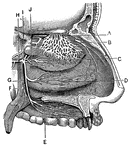
Nerves of the Nostril
"A, branches of the nerves of smell; B, nerves of touch to the nostrils; E, F,…
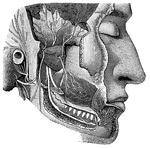
Cranial Nerves
"Dental Branch of One of the Divisions of the Fifth Pair of Cranial Nerves, supplying the Lower Teeth.…
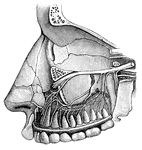
Cranial Nerves
"Dental Branches of One of the Divisions of the Fifth Pair of Cranial Nerves, supply the Upper Teeth."…

Nervous System
"Diagram illustrating the General Arrangement of the Nervous System. (posterior view.)" — Blaisedell,…
Neuron
"Showing a motor cell with its long, unbranched process (with two little lateral offshoots), with motor…

View of Organs from the Side
The chief organs of the body from the side. Labels: a, arch of the aorta or main artery of the trunk;…
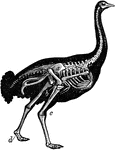
Skeleton of Ostrich
"Shows the powerful legs, small feet, and rudimentary wings of the bird; the obliquity at which the…

Surface of the palm
"Surface of Palm of the Hand, showing Openings of Sweat Glands and Grooves between Papillae of the Skin.…
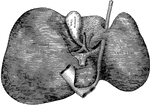
Pancreas
"The pancreas, partly cut away, so as to show the duct, which collects the pancreatic juice, and empties…

Peanut Worm - Interior Anatomy of Adult
Sipunculus nudus. A species of unsegmented marine worm, commonly called the peanut worm. "A, One fourth…

The Pigeon
"The Pigeon flying downwards and turning prior to alighting. The pigeon expands its tail both in ascending…
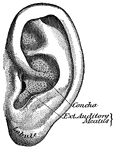
Pinna
"The outer ear consists of a plate of gristle, shaped somewhat like a shell, known as the pinna, or…
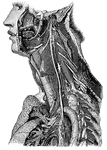
Trunk of the Pneumogastric Nerve
"Showing its distribution by its branches and ganglia to the larynx, pharynx, heart, lungs, and other…

Broken Radius
"When a bone is broken, blood trickles out between the injured parts, and afterwards gives place to…
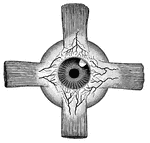
Attachment of the recti
"Showing the attachment of the recti, or straight muscles to the eyeball, also the distribution of arteries…

Dissection of the Renal Organs of a Chiton
An illustrative view of the dissection of he renal organs of a chiton. "F, foot; L, Edge of the mantle…
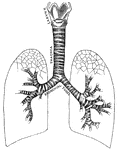
Respiratory system
"Larynx, trachea, and bronchi, showing the manner of division, and the rings of cartilage." —…
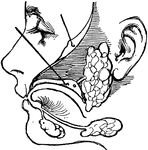
Salivary glands
"There are three pairs of salivary glands. One pair lies under the tongue; one pair is found under the…

Salmon
The salmon is well known both from its commercial importance and from its remarkable migrations up rivers…

Scapula
"The shoulder-blade is a large, flat, three-sided bone, which is placed on the upper and back…

Dorsal View of the Scapula of a Rabbit
An illustration of the dorsal view of the scapula of a rabbit. "A, acromion; m, metacromion; g, glenoid…


